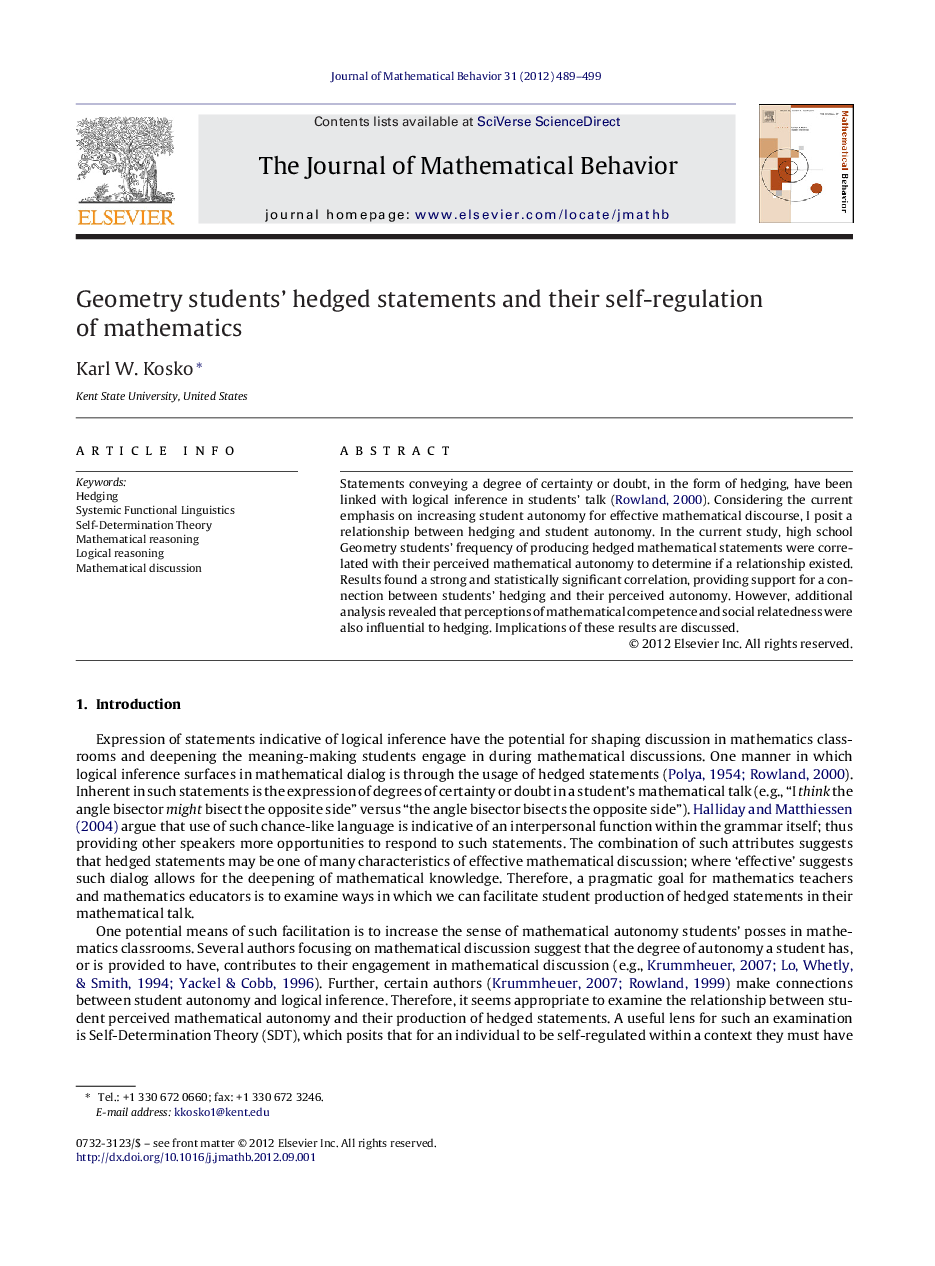| Article ID | Journal | Published Year | Pages | File Type |
|---|---|---|---|---|
| 360850 | The Journal of Mathematical Behavior | 2012 | 11 Pages |
Statements conveying a degree of certainty or doubt, in the form of hedging, have been linked with logical inference in students’ talk (Rowland, 2000). Considering the current emphasis on increasing student autonomy for effective mathematical discourse, I posit a relationship between hedging and student autonomy. In the current study, high school Geometry students’ frequency of producing hedged mathematical statements were correlated with their perceived mathematical autonomy to determine if a relationship existed. Results found a strong and statistically significant correlation, providing support for a connection between students’ hedging and their perceived autonomy. However, additional analysis revealed that perceptions of mathematical competence and social relatedness were also influential to hedging. Implications of these results are discussed.
► Students’ talk in a high school Geometry classroom was examined for hedging. ► The frequency of students’ hedging of mathematical statements was correlated with their perceived mathematical autonomy. ► Students with higher perceived mathematical autonomy produce more hedged statements, and vice versa.
